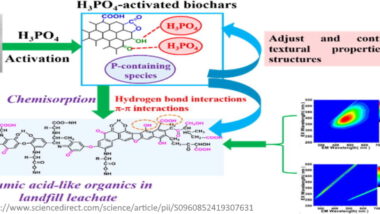“There are just two methods of adsorption commonly used in leachate treatment and they are GAC and Cation Exchange”. Reading this article should make it a lot easier to be successful in understanding the role of leachate treatment adsorption.
To understand the proper way to leachate treatment adsorption and achieve this objective in 3 easy steps, read on…
There are many different things worth doing these days and individuals looking for worthy undertakings have got a lot to choose from. For whichever good reasons, some people want to find out about leachate treatment adsorption. It is a comparatively frequent choice. There is very good news those of you that decide on this goal. It is really not at all difficult to attain, when you know what you are doing.
Reading this article should make it a lot easier to be a success at leachate treatment adsorption. To understand the proper way to leachate treatment adsorption and achieve this objective in 3 easy steps, read on…
Step 1
The 1st step is to consider how leachate treatment by adsorption can be achieved, and the only method usually reported on the web is by adsorption on to carbon in a Granular Activated Carbon (GAC column). Another method, seldom considered these days is by the passage of leachate through suitable soils which have a high cation exchange capacity, where local environmental regulations permit the use of soils to accomplish leachate treatment.
This will be significant simply because where EU regulations apply, and in particular the EU Groundwater Directive applies the use of the very low cost cation exchange method is not normally possible due to the prescriptive nature of that regulation which allows no exceptions.
At the same time, you need to stay away from GAC methods unless there is a large budget for payment for this very expensive treatment technique. It's going to be really important to get this 1st step performed correctly and well. In the event you don't succeed in this, then if the use of local soils exhibiting adequate cation exchange capacities is acceptable locally, then go for that to save money.
Step 2
The 2nd step is deciding what method is used to replenish the media which has adsorbed as much of the leachate contaminants as it is able to do. You should make sure that you steer clear of GAC unless you are able to enter a contract for a GAC supplier company to recycle the spent activated carbon media, as the spent carbon may be classed as hazardous waste unsuitable for return to the originating landfill together with in the case of using a cation exchange solution, moving the treatment to a new location once the cation exchange capacity (of the soils which act as a treatment filter zone strata) is spent.
Step 3
The 3rd step is deciding for most full strength MSW leachates how the leachate will be treated in a primary treatment stage prior to GAC or Cation Exchange. This can be important for the reason that leachate treatment adsorption techniques for full strength MSW leachates are ONLY suitable as final polishing stages after a primary treatment stage (usually aerobic biological treatment) has removed 95% to 99% of all contaminants first. Make sure you steer clear of the error of attempting to consider leachate treatment adsorption techniques as the primary treatment stage for normal modern MSW landfill leachate.
Conclusion
Carefully go through the 3 simple steps above. After you observe the above instructions you ought to be in a position to appreciate the role that leachate treatment adsorption might assume within a leachate treatment process with ease. In following the steps, make certain to do them properly, for those reasons explained, avoiding the possible blunders mentioned. Then celebrate!
Congratulate yourself! Pat yourself on the back! Take pleasure in the fruits and rewards that come with having successfully considered the treatment of MSW landfill leachate treatment adsorption techniques!




